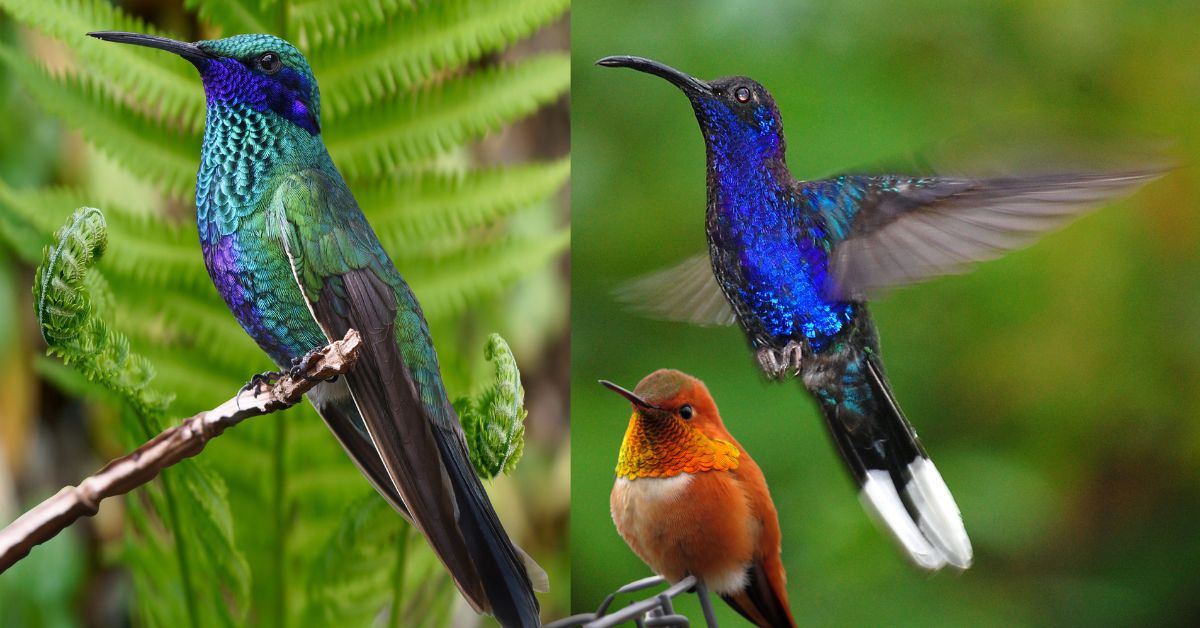In the misty cloud forests of Monteverde, Costa Rica, a quiet but important story is unfolding. The stars of the show are hummingbirds, those colourful little birds we see buzzing through the air, and the flowers they rely on for food. The problem? Climate change is making things difficult for them.
In this blog post, we’ll explore how these tiny, beautiful birds are facing an outsized challenge and what it means for all of us.
Key Takeaways
Climate change is altering the delicate balance between hummingbirds and their food sources in Monteverde’s cloud forest. Warmer temperatures and changing rainfall patterns are affecting flowering times and nectar production, potentially disrupting hummingbird populations.
Other Post to Read: How Long Do Hummingbirds Live?
How is climate change impacting hummingbirds in Monteverde’s cloud forest?
Climate change is reshaping the ecosystem of Monteverde’s cloud forest, affecting hummingbird populations through altered flowering patterns, nectar production, and habitat shifts. This disruption could lead to changes in hummingbird species composition and abundance.
The Hummingbird-Flower Tango
Imagine a dance where the partners have been practising for millions of years. That’s the relationship between hummingbirds and the flowers they pollinate. It’s not just beautiful – it’s essential.
But now, the music is changing.
- Warmer temperatures are pushing some hummingbird species to higher elevations.
- Drier conditions are affecting nectar production in flowers
- Changes in flowering times may not align with hummingbird breeding seasons.
It’s like showing up to a party, only to find that all the snacks have been moved to a different floor.
The Nectar Economy
Hummingbirds run on nectar. It’s their fuel, their currency, their lifeblood. However, in the new climate reality, this economy is facing a recession.
- Less rainfall means less nectar production in some plants
- Changes in temperature affect the sugar concentration in nectar
- Increased cloud cover can reduce the light plants need to produce nectar
Imagine if your local grocery store suddenly started stocking less food, and what was there had less nutrition. That’s what some hummingbirds are facing.
The High-Altitude Shift
As temperatures warm, some hummingbird species are moving uphill. It’s like a game of musical chairs, but with mountains.
- Species like the Steely-vented Hummingbird are now found at higher elevations.
- This upward shift could lead to increased competition for resources
- Some high-elevation specialists may run out of “up” to go
It’s a reminder that in nature, everything is connected. Move one piece, and the whole picture changes.
The Ripple Effect
Hummingbirds aren’t just pretty faces. They’re key pollinators, playing a crucial role in plant reproduction. If their numbers decline or their behaviour changes, it could affect the entire forest ecosystem.
- Fewer hummingbird visits could mean less pollination for some plant species.
- Changes in plant communities could affect other animals that depend on them.
- The unique biodiversity of Monteverde’s cloud forest could be altered.
It’s like removing a single thread from a tapestry – the whole picture starts to unravel.
What Can We Do?
In the face of such a complex problem, it’s easy to feel powerless. But there are ways we can help:
- Support research: The more we understand, the better we can respond.
- Protect habitats: Preserving and restoring forest areas gives species more resilience.
- Reduce our carbon footprint: Every bit helps in the fight against climate change.
- Spread the word: Share this story. The more people who know, the more who might act.
Final Thoughts
The story of Monteverde’s hummingbirds is more than just a tale of tiny birds in a faraway forest. It’s a window into the intricate ways climate change is reshaping our world.
These hummingbirds, with their jewel-like colors and helicopter-like hovering, remind us of the beauty and fragility of nature. They’re canaries in the coal mine, signalling changes that affect us all.
So, the next time you see a hummingbird, take a moment to appreciate them. And then ask yourself: what can I do to ensure these living gems continue to dance in our skies?
References:
